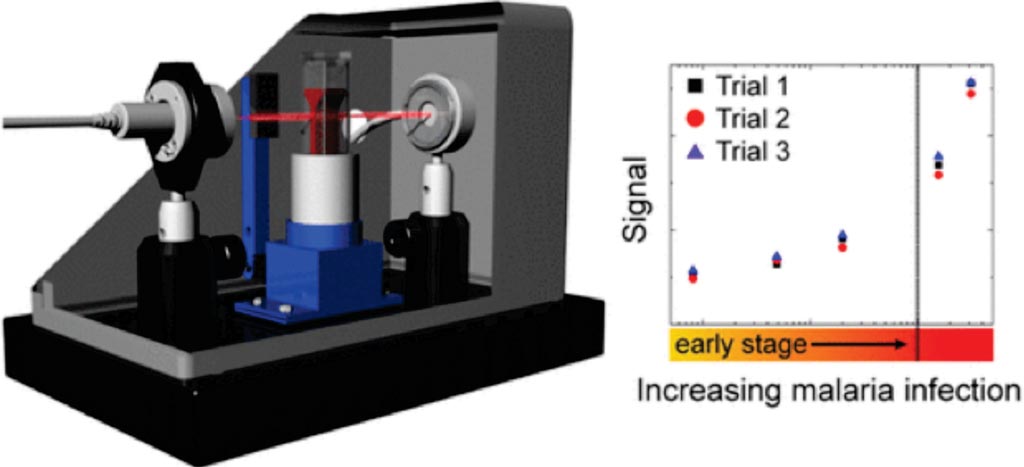Portable Device Developed for Early-Stage Malaria Detection
By LabMedica International staff writers
Posted on 13 Jun 2018
Over 216 million people were infected with malaria in 2016, and 445,000 individuals died from the disease. The key to solving this health crisis is early-stage diagnosis when malaria therapeutics are most effective.Posted on 13 Jun 2018
There are two standard ways of diagnosing malaria, yet both have limitations. The first involves taking a blood sample from a person and looking at it underneath a microscope for red blood cells that have been infected with the malaria parasite. Another method are the rapid diagnostic tests.

Image: The portable optical diagnostics system (PODS) prototype for diagnosing malaria (Photo courtesy of University of Southern California).
Bioengineers at the University of Southern California (Los Angeles, CA, USA) have developed a portable, magneto-optic technology for early stage malaria diagnosis based on the detection of the malaria pigment, hemozoin. The portable optical diagnostics system (PODS) prototype detects a byproduct generated by all species of the malaria parasite, as such; it is a rapid screening for all malaria strains. Because the amount of hemozoin in the blood is directly related to how far the malaria infection has progressed, it is an ideal indicator of infection.
By applying a magnet, it is possible to manipulate and move the hemozoin particles within a test tube around, or move them in and out of the laser beam. In this way, a single sample can be used to perform two measurements, and every diagnosis is personalized. If hemozoin is present, even in minute concentrations, the signals change. On average, it takes between 10 to 15 minutes for the signal to stabilize, and a larger difference between the two measurements indicates that the malaria has progressed farther. The scientists used β-hematin, a hemozoin mimic, and they demonstrated detection limits of less than 0.0081 μg/mL in 500 μL of whole rabbit blood with no additional reagents required. This level corresponds to less than 26 parasites/μL, a full order of magnitude below clinical relevance and comparable to or less than existing technologies.
Andrea Martin Armani, PhD, a professor of Chemical Engineering and Materials Science, and senior author of the study, said, “Malaria primarily impacts low-resource environments where supply chain management is difficult and access to power can be unreliable. Therefore, an effective malaria diagnostic must be independent of these.” The study was published on May 21, 2018, in the journal ACS Sensors.
Related Links:
University of Southern California














